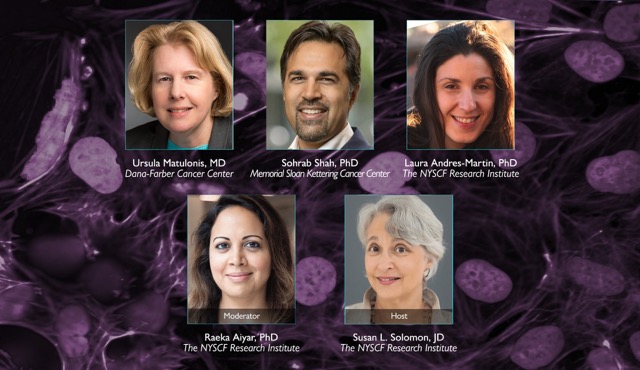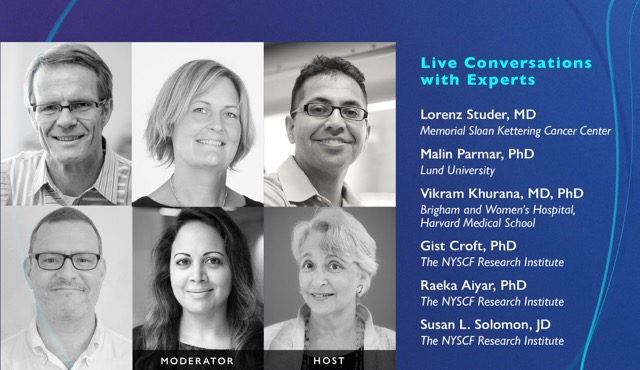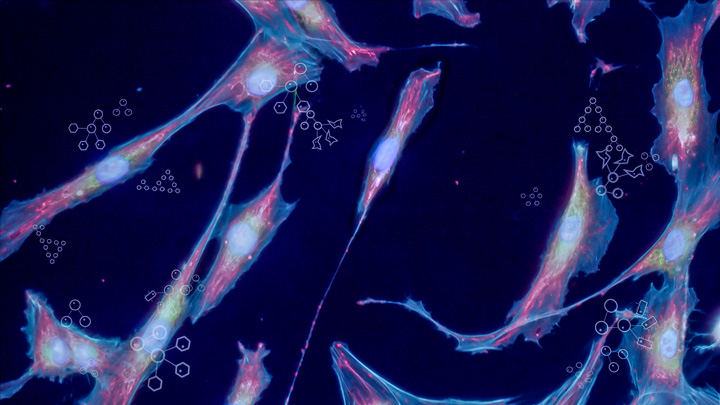
Prior to 2005, the stem cell field was virtually nonexistent. Stem cells had recently been discovered as a powerful tool for understanding disease and developing new treatments, but the field lacked the funding and talent needed to capitalize on this technology. Because of this, Susan L. Solomon launched The New York Stem Cell Foundation with the mission of using stem cell research to accelerate treatments and cures for the major diseases of our time. This catalyzed the growth of the field, which now includes thousands of scientists worldwide conducting groundbreaking research across many diseases.
Since NYSCF’s founding, we have boldly pursued the high-risk, high-reward research not funded by traditional mechanisms. Our work has resulted in numerous publications, clinical trials, and collaborations with researchers from leading institutes across the globe. Here are some of the crucial advances NYSCF has made over the years:
Clinical Impact
NYSCF’s primary goal has always been to accelerate new treatments and cures for the major diseases of our time, and we have seen many exciting therapies made possible by NYSCF moving into the clinic, including 21 currently in clinical trials. These successes demonstrate the power of stem cells for bringing about inventive new treatments, and we look forward to seeing many more move into the clinic soon.
A Cell Therapy for Macular Degeneration
Our 20/20 clinical trial is a cell therapy that will provide a lasting cure for age related macular degeneration (AMD). This pioneering stem cell therapy will use a patient’s stem cells to create healthy retinal cells that then replace those lost to AMD and restore vision. We are leading this effort and working in collaboration with world-renowned retinal surgeons including Dr. Stanley Chang at Columbia University and stem cell scientists including Dr. Kapil Bharti at the National Eye Institute at the National Institutes of Health. This builds on pioneering work by NYSCF – Robertson Stem Cell Prize recipient Dr. Pete Coffey, whose clinical trial of a stem-cell-based AMD therapy has improved vision in two AMD patients. Construction is now complete at the NYSCF Research Institute for a state-of-the-art “good manufacturing practice” (GMP) facility in which we can create cells that are safe for transplantation into patients.
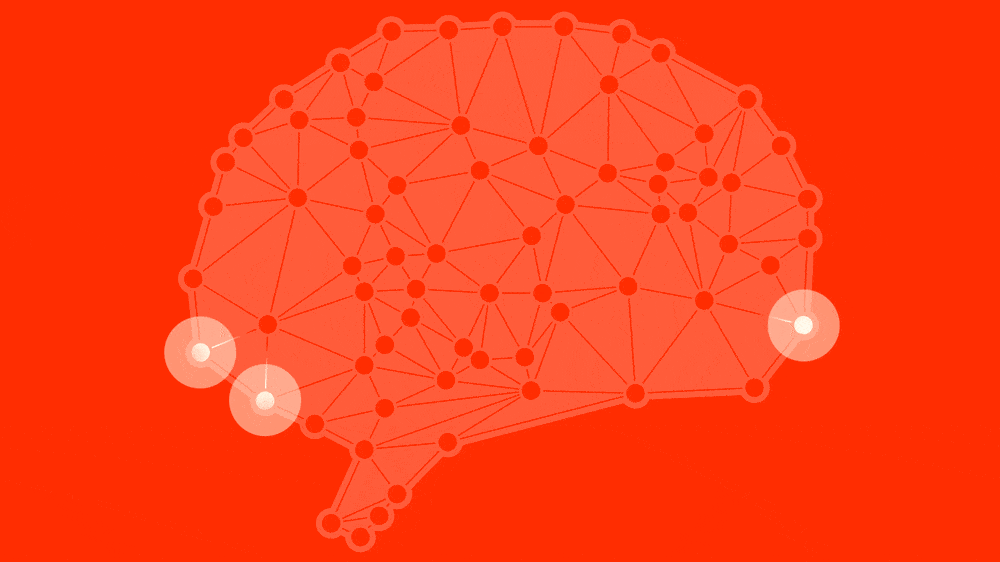
Discovering a New ALS Drug
An epilepsy drug, initially tested using a stem cell model of amyotrophic lateral sclerosis (ALS) developed with NYSCF support (which was named Time and Science Magazine’s #1 medical breakthrough of the year), has successfully reduced motor neuron excitability – a hallmark of the disease – in 65 ALS patients participating in a phase 2 clinical trial. This work, led by NYSCF Scientific Advisor Dr. Kevin Eggan and NYSCF – Robertson Stem Cell Investigator Dr. Brian Wainger, is the first clinical trial to result from a drug discovered in a stem cell model, setting a precedent for countless future discoveries.
Novel Approaches to Cancer
NYSCF – Robertson Stem Cell Investigator Alumnus Dr. Ravi Majeti of Stanford University, is conducting clinical trials to test a class of cancer therapies called anti-CD47 treatments. These drugs strip away camouflaging agents in leukemia-affected cells, helping the immune system target them more effectively.
NYSCF scientist Dr. Laura Andres-Martin has established cutting-edge technology to make personalized tumor avatars, building the world’s largest biobank of ovarian cancer organoids. She is using this unique resource to test drugs on 3D representations of each patient’s tumors in the lab, rather than on the patients themselves, allowing us to advance personalized treatment strategies for patients.
Clinical Trials for Parkinson’s Disease
Longtime collaborator and NYSCF Medical Board member Dr. Lorenz Studer is conducting the first US clinical trial using human stem-cell derived dopamine neurons to treat Parkinson’s disease.
Additionally, NYSCF – Robertson Stem Cell Investigator Alumna Dr. Malin Parmar of Lund University has spent several years working with the pharmaceutical company Novo Nordisk on a cell therapy for Parkinson’s disease that aims to replace lost brain cells with healthy ones derived from a patient’s own stem cells.
A team of scientists from NYSCF and Columbia University Medical Center developed a technique called mitochondrial replacement therapy that prevents the inheritance of devastating mitochondrial diseases in children. With this technique, published in Nature, mitochondria carrying disease-causing mutations in a mother’s egg cell can effectively be replaced by healthy mitochondria, preventing her offspring from inheriting fatal mitochondrial diseases. Mitochondrial replacement therapy is currently used in the United Kingdom, where it is preventing children from inheriting potentially fatal diseases.
Technology
The NYSCF Global Stem Cell Array®
The Array is the world’s only fully automated robotic technology for creating stem cells at a scale that represents the diversity of large patient populations, helping us to understand what makes each patient unique. The Array produces hundreds of standardized, high-quality stem cell lines each month, gene edit them to study the genetic basis of disease, and convert them into the types of cells affected in disease (e.g., brain, heart, pancreas). The scale of the array allows us to increase the number and complexity of studies we can perform on these cells, gaining unique insights into how diseases work and testing large amounts of drugs. We work to democratize access to the Array, allowing labs around the world to leverage its singular capabilities for their research, advancing our ability to understand more than 70 diseases.

Artificial Intelligence
By integrating artificial intelligence with the Array, we are improving the quality and efficiency of cell line production.
We are also picking up on disease features imperceptible to the human eye and using them to develop new intervention strategies that would be otherwise overlooked, accelerating drug discovery and advancing the most promising treatments to the clinic.
Our groundbreaking AI work was recently published in the prestigious journal Nature Communications, and we are already moving to utilize this exciting platform in ways that will advance personalized medicine
A Method for Creating Embryonic Stem Cells
We developed a method, called somatic cell nuclear transfer, that allowed scientists to create embryonic stem cells from individual patients, opening the door for more comprehensive study of disease. This technology was named a ‘breakthrough of the year’ by TIME magazine in 2011.
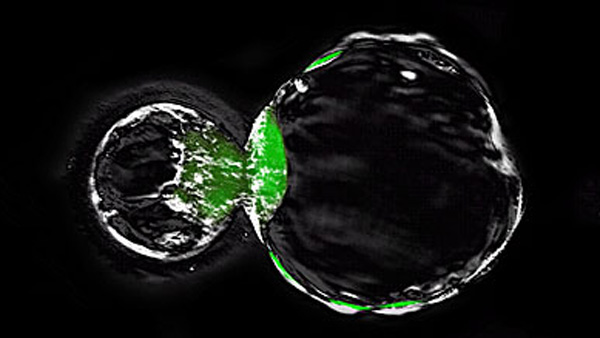
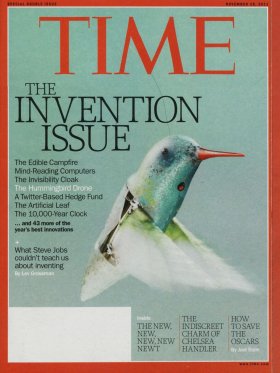
Disease Research
The backbone of our mission lies with using stem cells to advance disease research, and our scientists have made many important discoveries that are paving the way for brighter futures for patients everywhere.
Disease Modeling and Drug Testing
NYSCF scientists have established methods for advanced cell manipulation, allowing us to create models of diseases that affect various human tissues, such as the lungs, pancreas, and brain. Because of this, we can address a variety of diseases including Alzheimer’s, Parkinson’s, multiple sclerosis, diabetes, cancer, macular degeneration, and more. The cells NYSCF creates represent the unique genetics of the patients from whom they were derived, allowing us to pursue personalized medicine at an unprecedented scale.
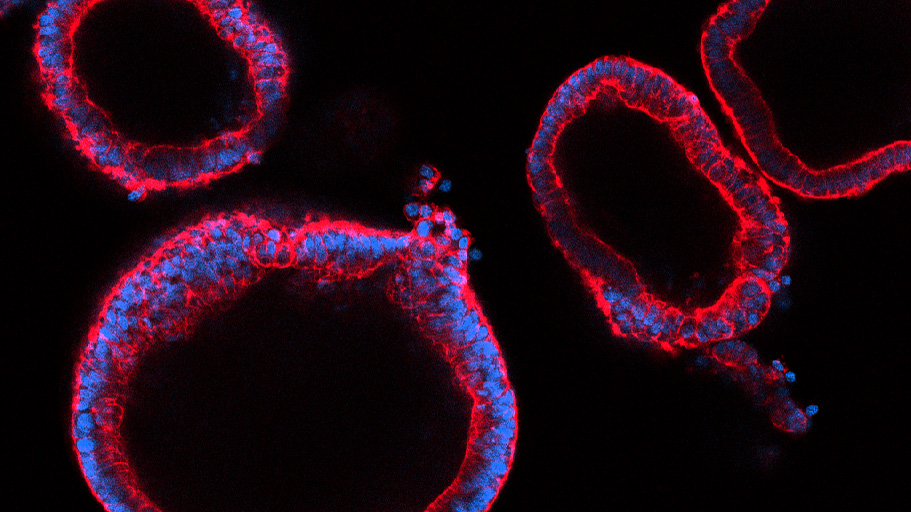
Creating All Cell Types in the Brain from Stem Cells
To understand brain diseases such as Alzheimer’s, Parkinson’s, and multiple sclerosis, it is important that scientists can examine all cell types in the brain. NYSCF’s Dr. Valentina Fossati has pioneered methods for creating a category of brain cells called glia – support cells in the brain that likely play significant roles in disease but are often overlooked in research and drug development. Dr. Fossati’s protocols for making glia (such as astrocytes, oligodendrocytes, and microglia) are now used by scientists around the world, accelerating research into how inflammation and the immune system drive neurological diseases and opening the door for entirely new classes of therapies.
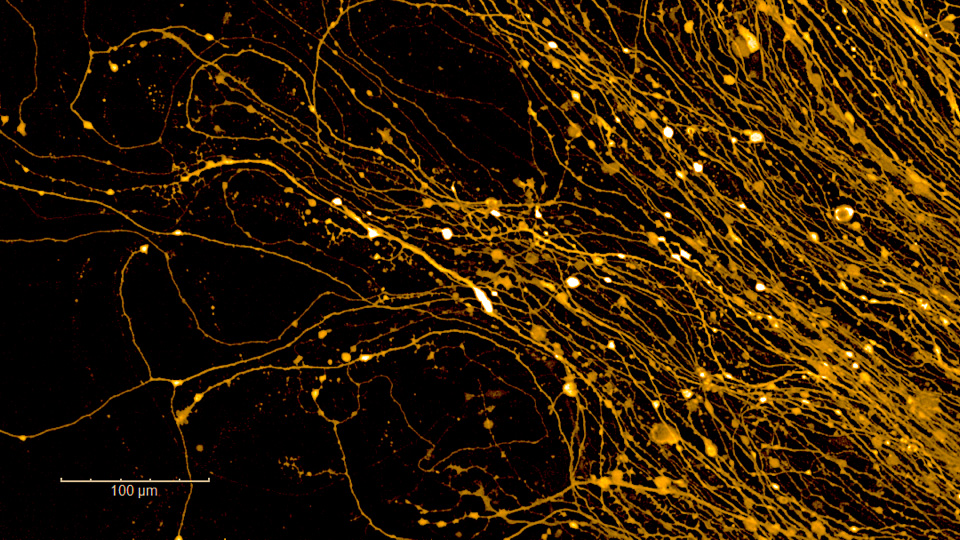
Personalized Bone Grafts from Stem Cells
In a step towards personalized bone grafts to treat traumatic injury or congenital defects, NYSCF scientists led by Dr. Giuseppe Maria de Peppo discovered in 2013 how to create patient-specific bone substitutes from skin cells for repair of large bone defects. This advance facilitates the development of customizable, three-dimensional bone grafts on-demand, matched to fit the exact needs and immune profile of patients whose bodies may otherwise reject synthetic grafts or require frequent surgeries to get them replaced.
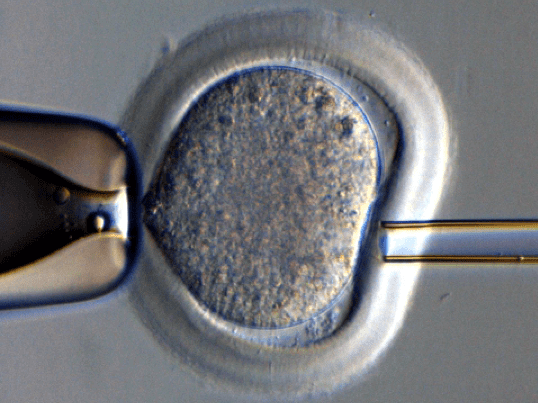
The First Personalized Stem Cell Model of Disease
We created the first-ever disease-specific stem cell line using somatic cell nuclear transfer (SCNT). Our scientists used SCNT to create embryonic stem cells from a patient with type 1 diabetes. This work marked a major step forward in the effort to use stem cells to understand the development of, and eventually treat, a range of chronic diseases affecting tens of millions of people.
Community building
NYSCF understands that cures are not possible without collaboration across a dedicated network of scientists, supporters, and advocates. We have grown our community exponentially in the past 15 years, catalyzing new ideas and combining resources to ensure that brilliant ideas can reach patients.
Stem Cell Investigator and Fellowship Programs
One of our first actions was to establish programs that could provide early-career investigators and fellows with the funds they need to carry out their research, a critical step to encourage and recognize scientists in a young and underfunded field. Today, the NYSCF – Druckenmiller Fellowship and NYSCF – Robertson Investigator Programs remain the only awards that confer unrestricted funding to talented stem cell scientists. The programs have produced 68 fellows and 59 investigators at 36 institutions around the world, where they are making the strides needed to reach cures.
Additionally, the NYSCF – Robertson Stem Cell Prize, awarded from 2011-2017, was conferred each year to an outstanding young stem cell scientist in recognition of significant and path breaking translational stem cell research. Recipients of this award include Dr. Feng Zhang for his work in CRISPR gene editing, and Dr. Pete Coffey for his stem cell therapy to treat macular degeneration.
Initiative on Women in Science and Engineering (IWISE)

For us, gender equity in science, technology, engineering, and medicine (STEM) is mission critical. We need 100% of the available brainpower to reach treatments and cures as quickly as possible. Our IWISE Working Group articulated seven actionable strategies institutions can take to promote gender equity in a 2015 Cell Stem Cell paper. This group also created a Report Card for Gender Equality which is filled out by every NYSCF grant applicant to survey their institutional policies and statistics on gender equality throughout the academic pipeline. The results of a 5-year analysis of these report cards were published in a 2019 Cell Stem Cell paper defining the extent of gender parity issues and opportunities for improvement. We continue to work alongside leading institutions to ensure that gender equality is prioritized and that concrete steps are taken to foster it.
The NYSCF Conference
The NYSCF Conference is the leading annual scientific meeting on translational stem cell research. Since 2005, we have convened hundreds of participants annually from academia, industry, government, non-profits, and patient groups at The Rockefeller University to discuss the latest advances in disease research and treatment. This addresses a critical need for knowledge to be regularly shared and discussed throughout the stem cell community to help translate discoveries into treatments and cures. The Conference strengthens the research community, sparking new ideas and collaborations which otherwise would not have been possible.
Collaborating with Leading Institutions
We partner with experts at over 100 world-renowned organizations to further research in multiple disease areas. For example, we partner with INADcure to enable research into infantile neuroaxonal dystrophy (INAD), a rare and debilitating disorder that attacks the nervous system in children. We also collaborate with large pharma to advance the use of stem cells in detecting drug toxicity, the National Eye Institute to explore drivers of macular degeneration, Google Research to combine artificial intelligence with our stem cell technologies and identify disease features, the Stanley Center at the Broad Institute of MIT and Harvard to develop a stem cell resource to study schizophrenia and psychiatric disorders, and Johns Hopkins University School of Medicine and Bloomberg Philanthropies to accelerate precision medicine. These collaborations widen the scope of what we can accomplish and ensure that promising ideas are pursued.
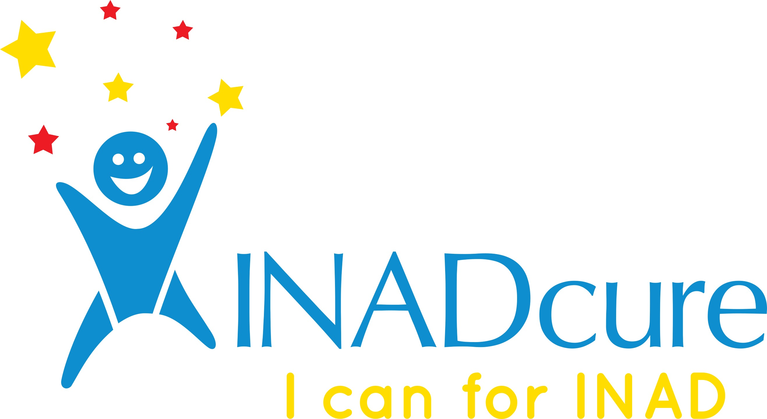


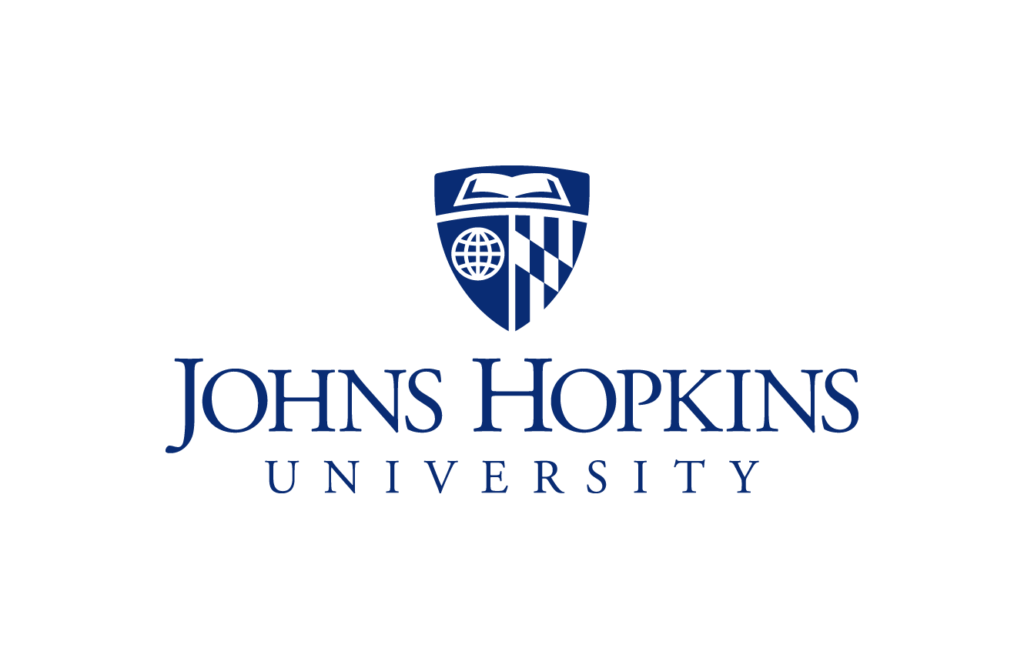
Education
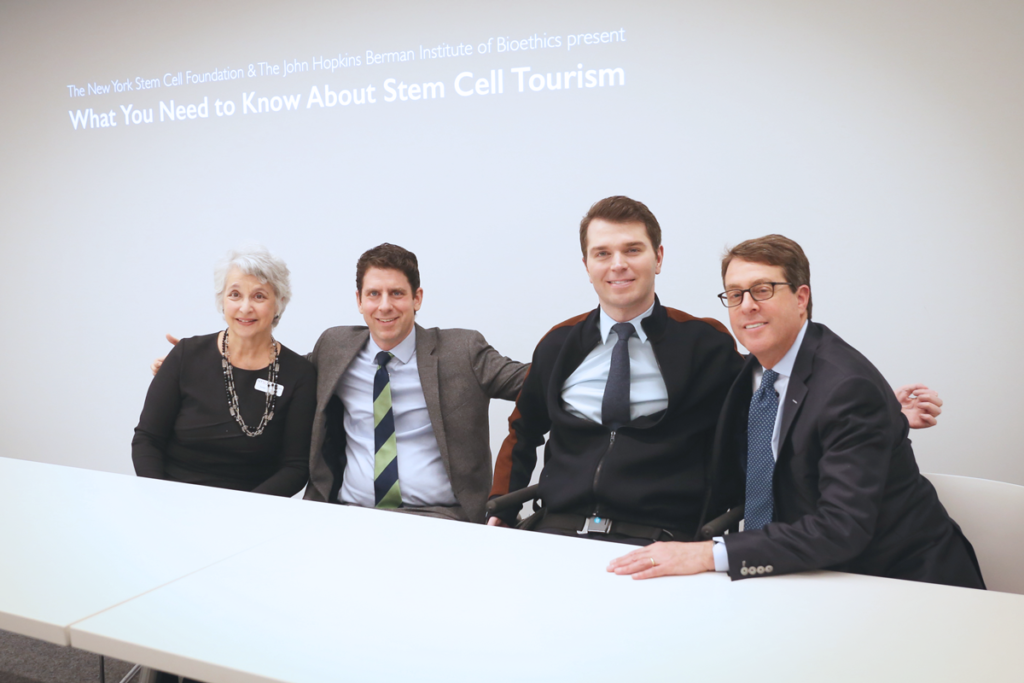
Educational Events for Scientists and the Public
Dissemination and discussion about science across all populations is critical for driving progress. To facilitate dialogue between researchers and the public, we host events that bring leading scientists and physicians to our headquarters for presentations and panel discussions on their groundbreaking work. These events are attended by scientists and members of the public – including patients and their families – and guests are invited to ask questions, share ideas, and engage in thoughtful discussions. Check out highlights from our most recent event on type 1 diabetes.
High School Teacher Education and Internship Programs
Knowledgeable teachers create successful students, and one of the best ways to learn science is to participate in research. This philosophy is at the core of our Summer Research Program for Science Teachers, which is run in collaboration with Columbia University. Teachers who participate in this program spend eight weeks during two consecutive summers working in NYSCF’s labs and completing discipline-specific professional development exercises. Studies have shown that 18% more students of program graduates pass a New York Regents science exam than passed such an exam in the same teacher’s classes in the year prior to the teacher’s entry into the program. Additionally, program graduates are retained in classroom teaching at a 2.7-fold higher rate than comparably experienced non-participating teachers.
NYSCF University provides approximately 20 high-achieving, diverse students with a paid ten-week summer enrichment internship. This internship gives students a rare glimpse into the fast-paced world of stem cell research, insight into life at an entrepreneurial nonprofit research institute, exposure to career opportunities in science, and connections to valuable professional and peer networks. Many of our interns go on to become successful researchers and advocates for science, often citing the program as a driving force in their passion for the field.
Laboratory Tours and Family Stem Cell Day
Throughout the year, we host laboratory tours and career panels for schools and other nonprofit educational programs, often including students from underserved communities . The tours give students a firsthand look at a scientific laboratory and an opportunity to meet the diverse team of NYSCF scientists and to explore the wide variety of career opportunities in this fast-paced field.
Family Stem Cell Day is an annual event that allows students grades K-12 to learn about research, tour NYSCF’s labs, and participate in science-themed activities (everything from digitally coloring cell images to making slime). This event provides students with the opportunity to speak one-on-one with researchers and ask questions about stem cells, NYSCF’s work, and the life of a scientist.
Copyright © 2023 The New York Stem Cell Foundation. All Rights Reserved.

